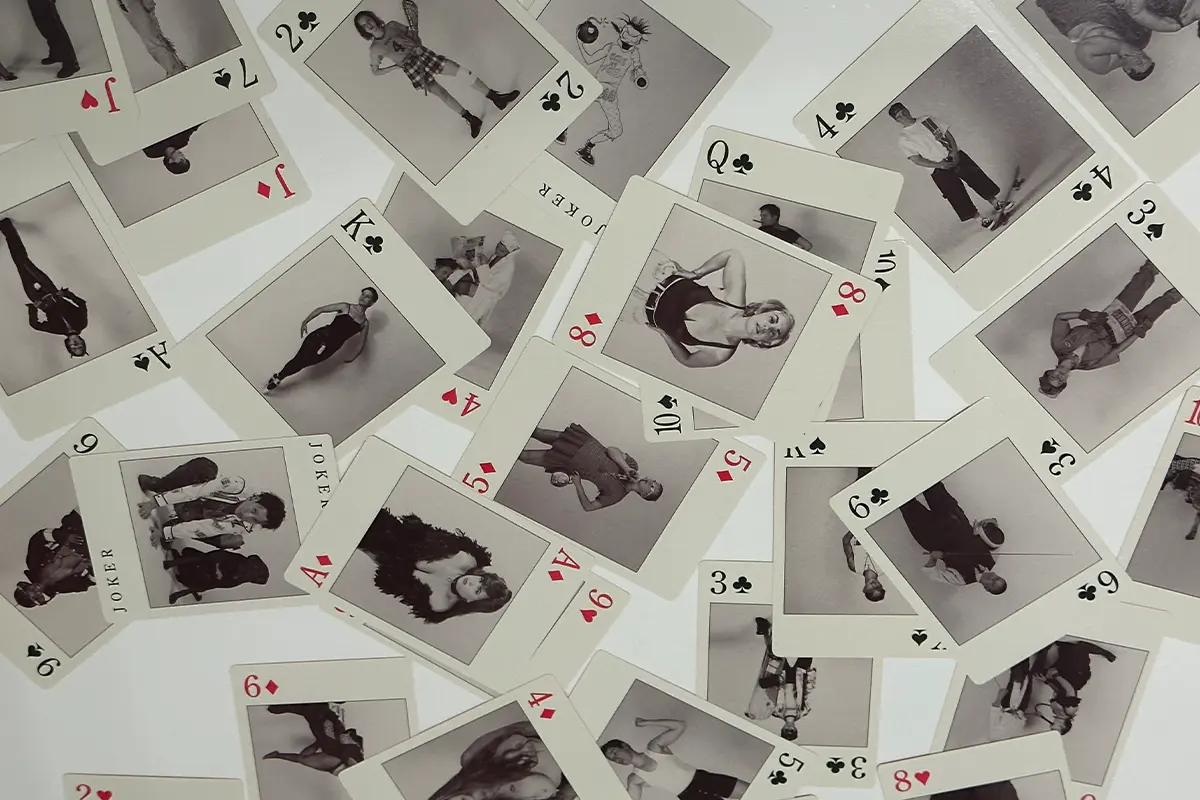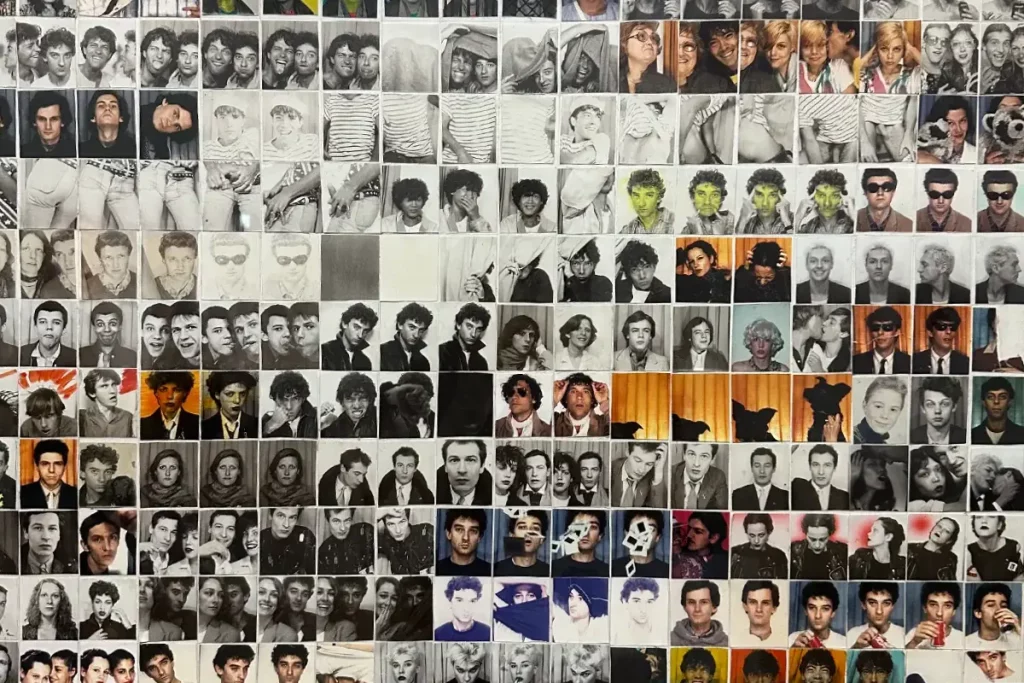After the release of the song Over The Rainbow from Wizard of Oz, ‘a friend of Dorothy’s’ became a code name to discuss homosexuality in the 70s at the Centre Pompidou
Celebrating LGBTQ+ artists at Centre Georges Pompidou: Over the Rainbow
The song Over the Rainbow, performed by Judy Garland in the film The Wizard of Oz, inspired name of the exhibition, inaugurated at Centre Georges Pompidou on June 28, 2023. It was after the release of this film that the LGBTQ+ community started using the term ‘a friend of Dorothy’s’ – the character interpreted by the American singer – as a code name to freely discuss homosexuality. The song, composed in 1939, became an anthem for the LGBTQ+ community in the 1970s. The rainbow depicted in the song will later take on the colors of the LGBTQ+ flag.
Over the Rainbow explores a panorama of genres and works, subcultures and movements: cinema, erotic photography from the interwar period, theater of inversions, literature and poetry rub shoulders with leather culture, militant productions, and the most recent queer magazines.
Launched on June 28th, during Pride Month, the exhibition celebrates LGBTQ+ artistic culture through more than five-hundred works and documents from the collection of the Centre Pompidou, visitors are immersed in the evolution of LGBTQ+ eras and struggles. The exhibition shows how artists have multiplied media and means of expression to change mentalities about the condition of sexual minorities throughout the decades of the 20th Century.
The evolution of LGBTQ+ art displayed at Over the Rainbow
The exhibition starts with Salon de l’Amazone, a lesbian meeting place in 1930s Paris. The literary and artistic circle was created by Natalie Clifford Barney, an American expatriate, and frequented by a series of personalities, including painters Marie Laurencin and Romaine Brooks, bookseller Sylvia Beach and actress Greta Garbo. Literary creations and photographies are displayed, all dedicated to the celebration of sapphism.
Le livre blanc’ follows, with the homosexual manifesto of Jean Cocteau published in 1927, illustrated by original drawings of the artist. Photographs from the interwar period are displayed next, including shots by militant artists Florence Henri and Raymond Voinquel.
The photographer Brassaï is in the spotlight with his photographs reporting Parisian transvestite nights at the Magic-City balls, a venue that used to gather over 2,500 people at each festival between the 1920s and 1934. At these evenings, men dressed up as women and women as men, impersonating personalities of the time like Joan Crawford or Marlene Dietrich. Paris is portrayed as a venue for citizens and passersby to freely experience their sexual orientation.
Nicolas Liucci-Goutnikov on fighting stereotypes at Centre Pompidou
Jean Genet’s long-censored film Un chant d’amour, which saw pederasty as a revolt against society, is shown, while the exhibition evokes the first gender transitions representations with painters Michel-Marie Poulain and Lili Elbe, considered the first person to perform reattribution surgery in the thirties.
«The idea of the exhibition is to question how artists, whatever their sexuality, wanted to show an affirmative image to combat the stereotypes that have long been the common lot», explains Nicolas Liucci-Goutnikov, curator of Over the Rainbow and head of the Kandinsky Library.
«The exhibition proposes a succession of moments of the social and cultural history of sexualities and a constellation of works having as common point to affirm, each in its own way, what the homophobic representation denigrates», he adds.
The gay community in the 20th Century: an expression of the 90s queer society at Centre Pompidou
In the second half of the 20th century the first artistic expressions of fetish desire appeared in the gay community. These include the fetishism of leather and sadomasochism represented by Kenneth Anger and Nancy Grossman. From the 1970s onwards, the Front Homosexuel d’Action Révolutionnaire, more commonly known as the FHAR, was created.
American artist Andy Warhol is also present, with a series of drawings made in the Fifties, as well as with his interpretation of fetishism portrayed in Oxidation painting, recently acquired by the museum. The work is based on the urine of models who visited the Factory in the 70s.
The 1980s and 1990s were marked by social protests over the arrival of the HIV virus. This fight is expressed through posters campaigning against AIDS. Collectives like Boy/Girl with Arms Akimbo condemn the inaction or even the denial of public authorities in the face of the wave of infections.
The affirmation of the queer theory ends up mixing at the end, portraying the 1990s scene, with the development of contemporary art forms displaying questions of sexuality, gender, ethnic origin, and social class. In a more accepted expression of society.
Centre Georges Pompidou: a hub for contemporary art since 1977
Located in the heart of Paris’s Beaubourg district, the Centre Pompidou was commissioned in 1969 by the then French president Georges Pompidou. Following an international architectural competition organized by the President, a young team of architects won the project for the future Centre Pompidou. Their names are Renzo Piano, Richard Rogers, and Gianfranco Franchini, assisted by engineer Peter Rice.
The idea for the building’s architecture was different from the dominant conceptions of the time. There is a simplicity of shapes and a consideration given to the environment. The concept behind the museum’s architecture was to break with the codes considered ‘austere’ in other Parisian cultural institutions. The architects wanted to create a welcoming, free space between the public and the museum.
Today the Centre Pompidou is dedicated to contemporary art in all forms. It boasts a collection of visual arts, architecture, design, shows, and cinema. The museum houses Europe’s largest collection of contemporary and modern art, known as MNAM, comprising 50,000 works, of which between 1,500 and 2,000 are on permanent public display.
Le Centre Pompidou: a multidisciplinary cultural center
The Centre Pompidou is a multidisciplinary cultural center in the Paris city center. It includes a library, also known as ‘la BPI’, theaters and cinemas, as well as IRCAM, an institute for musical research and creation.
The museum’s collections are spread over five floors. The layout of the exhibition rooms gives visitors the impression of never seeing the same works, and never passing through the same corridors. The concept of the building, which became a monument in spite of itself, paved the way for a style hitherto unknown, such as the Guggenheim Museum in Bilbao, Spain, designed by Franck Gehry.
The museum’s programming is in constant evolution, offering temporary exhibitions throughout the year building loyalty to the MNAM. Among the Centre Pompidou’s memorable moments are the Marcel Duchamp retrospective in 1977, the first to be held at the museum since it opened that same year. Salvador Dali’s surrealist works in the Centre Pompidou forum in 1979. ‘Les Immatériaux’ exhibition in 1985, the first to feature new technologies, ‘Vides’, ‘elles@centrepompidou’ in 2009 and the Jeff Koons retrospective in 2014.
Over the Rainbow exhibit at the Centre Pompidou, Paris
With a headquarter in the middle of Paris’s Beaubourg district, the Centre Pompidou houses Europe’s largest collection of contemporary and modern art since 1977. Over the Rainbow, an exhibition that displays artists who have made history in the representation of the LGBTQ+ community, can be visited at the Centre Pompidou from June 28 to November 13, 2023.
Cristian Tonea























